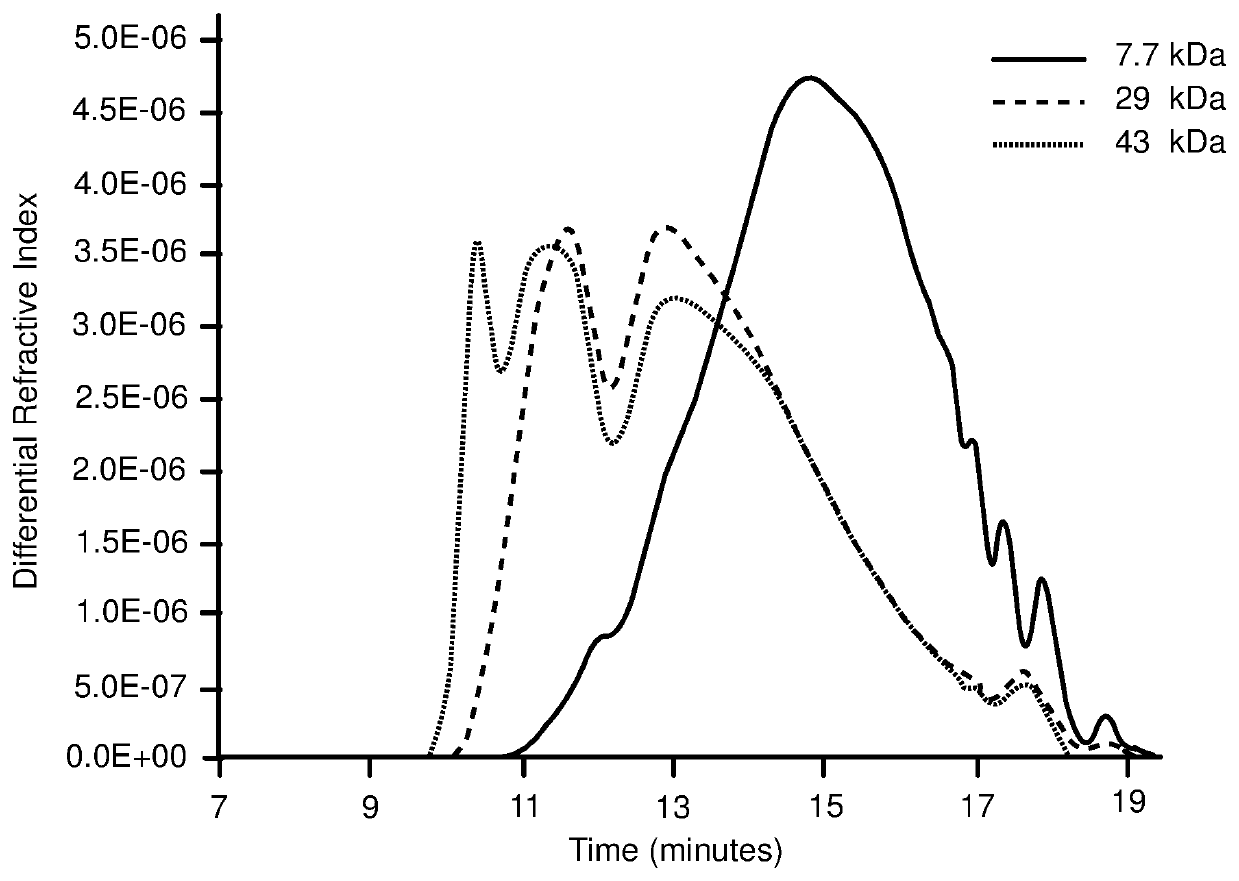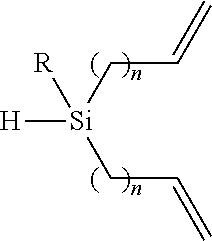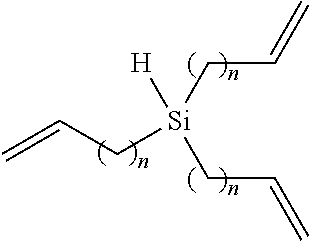Macromolecular networks and process for making same
- Summary
- Abstract
- Description
- Claims
- Application Information
AI Technical Summary
Benefits of technology
Problems solved by technology
Method used
Image
Examples
example 1
cular Network Formation
[0051]The hyperbranched polymer has a sufficient number of x, y and z units to give the hyperbranched polymer a weight average molecular weight of about 30,000 grams per mole. Such molecular weight was determined in accordance with the test method provided in the Test Methods section of this specification for weight average molecular weight.
[0052]The results of such analysis are found in FIG. 1.
example 2
Production of a Macromolecular Network
[0053]A macromolecular network is produced according to the synthesis of Example 1 except
[0054]
wherein R is selected from the group consisting of alkyl (i.e. —CH3, —CH2CH3, CH2CH2CH3), aryl (i.e. C6H5), halogen (i.e. Br, Cl, I) or alkoxy (i.e. OCH3, OCH2CH3) and each indice n is independently an integer from 0 to 5 is substituted for.
[0055]
example 3
Production of a Macromolecular Network
[0056]A macromolecular network is produced according to the synthesis of Example 1 except
[0057]
wherein R is selected from the group consisting of alkyl (i.e. —CH3, —CH2CH3, CH2CH2CH3), aryl (i.e. C6H5), halogen (i.e. Br, Cl, I) or alkoxy (i.e. OCH3, OCH2CH3) and each indice n is independently an integer from 0 to 5 is substituted for.
[0058]
PUM
 Login to View More
Login to View More Abstract
Description
Claims
Application Information
 Login to View More
Login to View More - R&D Engineer
- R&D Manager
- IP Professional
- Industry Leading Data Capabilities
- Powerful AI technology
- Patent DNA Extraction
Browse by: Latest US Patents, China's latest patents, Technical Efficacy Thesaurus, Application Domain, Technology Topic, Popular Technical Reports.
© 2024 PatSnap. All rights reserved.Legal|Privacy policy|Modern Slavery Act Transparency Statement|Sitemap|About US| Contact US: help@patsnap.com










